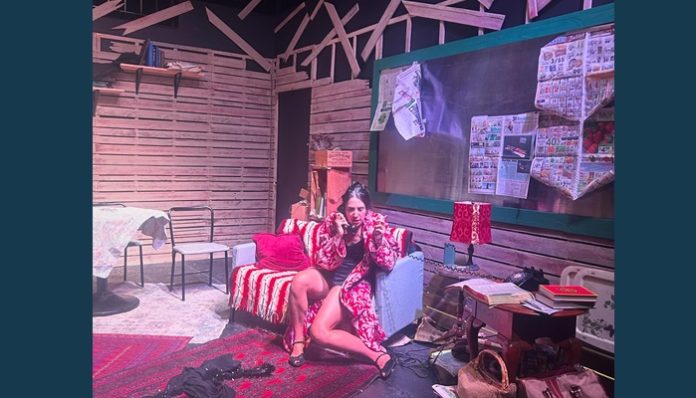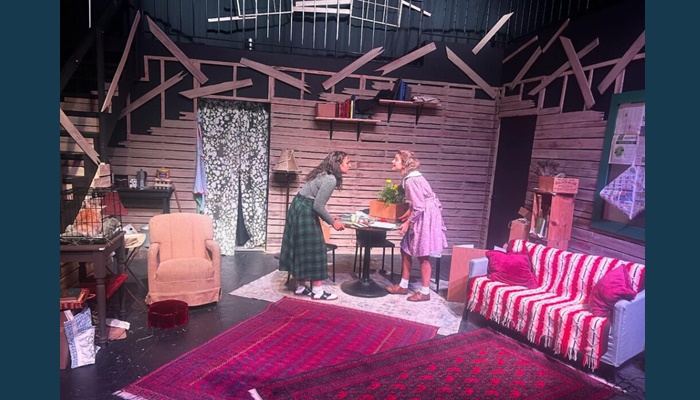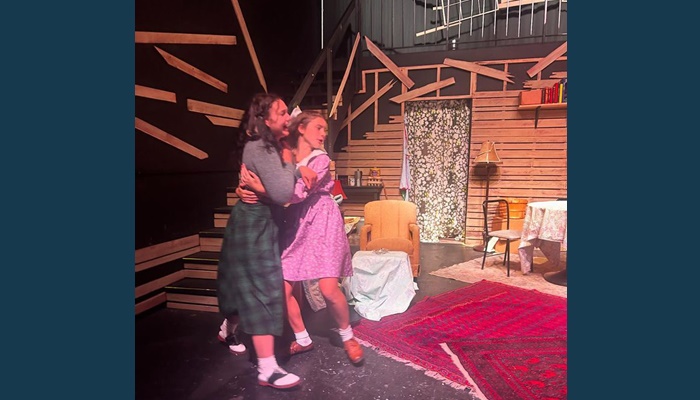
SALT LAKE CITY, Utah, July 17, 2024 (Gephardt Daily) — If you’re familiar with classic young adult novels, chances are you’ve heard of author Paul Zindel.
I was definitely a fan of Zindel’s books growing up; I recall reading “My Darling, My Hamburger,” “Pardon Me, You’re Stepping on My Eyeball!,” and others multiple times. Zindel wrote a total of 53 books, all but one of them aimed at children or teens. They tended to be semi-autobiographical, focusing on young misfits with abusive or neglectful parents.
Oddly, I don’t remember as a youngster being bothered at all by themes like this; I think perhaps teens have a curious resilience, unless they are reading about topics that affect them directly. Despite the often dark subject matter of his books, which deal with loneliness, loss, and the effects of abuse, they are also filled with humor.
Many of his novels have zany titles and, in 1964, Zindel wrote his first and most successful play, “The Effect of Gamma Rays on Man-in-the-Moon Marigolds.” The play had its world premiere in Houston in the 1964/1965 season, then opened Off-Broadway in 1970, and on Broadway in 1971. Zindel received the 1971 Pulitzer Prize for Drama and a New York Drama Critics’ Circle Award for the work. The novel was also made into a 1972 movie, directed by Paul Newman and starring his wife Joanne Woodward.
Although the play was incredibly popular and often-produced, I can’t recall another production in the Beehive State in the 22 years that I’ve lived here. This show is a collaboration between Hart Theater Company and Immigrant’s Daughter Theatre. It opened Thursday, July 11, and continues this week at Lightree Studios, which is at 740 W. 1700 South, with shows Thursday, Friday and Saturday at 7:30 p.m. and Sunday at 4 p.m. For tickets click here.
I was not familiar with the piece before seeing this production, but interestingly, when I was talking to friends about it, numerous people said it was either their favorite play, or that they performed scenes from it in acting school. It may be that the show just wasn’t as popular in England when I was growing up.
The play tells the story of acid-tongued Beatrice Hunsdorfer, who wreaks petty vengeance on everyone around her because of her own misery. She supports herself and her two daughters by taking in a decrepit old boarder, Nanny, whom she also verbally abuses. Beatrice’s older daughter, Ruth, is an extroverted but highly strung teen who is epileptic and has night terrors, while her younger girl, Matilda, nicknamed Tillie, who is plain and almost pathologically shy, demonstrates an intuitive gift for science despite the fact her mother often keeps her home from school. Encouraged by her teacher, Tillie prepares an experiment involving marigolds raised from seeds exposed to radioactivity for her science fair, (Fun fact: Zindel was also a science teacher), eventually winning a prize. Proud but jealous, too filled with her own hurt to accept her daughter’s success, Beatrice can only maim when she needs to love, and deride when she intends to praise. Yet, as Tillie’s experiment proves, something beautiful and full of promise can emerge from even the most barren, afflicted soil.

I was mesmerized by the play; I love classic 20th century American theater and for me, it had echoes of Tennessee Williams’ best works, with Beatrice a chaotic amalgamation of Maggie in “Cat on a Hot Tin Roof,” Amanda in “The Glass Menagerie” and of course Blanche in “A Streetcar Named Desire.” The play also has similarities to Eugene O’Neill’s “Long Day’s Journey into Night” and Edward Albee’s “Who’s Afraid of Virginia Woolf?” Indeed, Zindel took a creative-writing course with Albee while he was an undergraduate; Albee became his mentor and was an advocate for the younger playwright. To me, it seems like a great idea for two companies that are helmed by women to produce a play like this, with such strong female characters, and in fact, I would say that it would be a sound idea to create a slot in Hart’s forthcoming seasons for a classic American play such as this one; I personally feel that the classics are not staged enough here in Salt Lake City.
This play is Hart Theater Company’s second non-musical, and nicely fits its mission to produce fully mounted musical productions as well as original works written by local artists, and lesser-known plays and musicals that are not commonly staged in the Beehive State. A play like this really takes a director and cast that are adept at finding the levels and moments of levity in the relentless bleakness presented. In this case, the cast is led by visionary director and playwright Morag Shepherd, who co-founded Immigrant’s Daughter Theatre in 2021.
Shepherd’s direction is always precise and insightful, and she doesn’t shy away from the grubbier elements of the script. Ariana Farber’s portrayal of Beatrice is a tour-de-force; she usually plays parts that are more charmingly Type A. Here, Farber is absolutely deconstructed, inhabiting Beatrice’s emotional nakedness, whipping ruthlessly between vindictive verbal abuse of her daughters and flashes of inky charm. It’s a huge role, and Farber carries the play with aplomb. The only thing I would have liked to see more of in her performance is a handful of introspective moments. She’s so immersed in her own pain that she’s oblivious to how hurtful her words are to others; and maybe that pain at times could immobilize her. The character does not have very many redeeming qualities, and seeing Beatrice in repose, and not always on the attack, might have increased our sympathy for her a little.

Heidi Farber (who is Ariana Farber’s daughter in real life) playing Tillie and Jami Greenburg as Ruth both turn in lovely, nuanced performances. Their characters are like the marigolds, turning their faces to the intense, radioactive force which is their mother, wanting to be nurtured, not knowing in any moment whether she’s going to draw them to her or tear them apart. Heidi Farber uses her expressive face to speak volumes that her character’s shyness does not allow. Greenburg’s Ruth appears to be more resilient; hormonal, hyperactive and gossip-hungry, sometimes rewarded for her charm by her mother with cigarettes. But we soon see that Ruth has her darker moments too, almost as if her mother’s bleakness has seeped into her, and they are terrifying.
Vicki Pugmire’s Nanny is a study in helplessness; she’s as disenfranchised as Peter, the poor little pet rabbit who meets a terrible fate partway through the play (a friend I was sitting next to said she could feel the waves of discontent emanating from me at this point, as I have a pet bunny of my own). Ainslie Shepherd as Janice, Tillie’s rival at the science fair, also does a great job with her monologue toward the end of the show. With her immaculate school uniform, neat braids and earnest, smiley demeanor, we assume her character might be a break from the general gloominess of the show, but we soon learn that Janice has a sprinkle of psychosis just like the other characters.
If Farber’s Beatrice is deconstructed, then so is the world in which she lives. The scenic design, by Allen Smith, depicts a living room that looks like the inside of a giant wooden box, littered with items, and with newspaper on the windows. There is no suggestion of the outside world, and the room, like the family, appears to be exploding or imploding, with planks of wood flying out above the walls of the home onto the walls of the theater. The lighting design by Kyle Esposito and sound design by Shepherd also serve to highlight the frightening, claustrophobic world these characters live in; there is an eerie green light used at times, paired with ambient sound.

The costumes, designed by Ariana Farber, also indicate a lugubrious suggestion of what these characters could be if they weren’t so downtrodden; Tillie and Ruth wear rather neat school uniforms, though one can see that Ruth puts rather more effort into her appearance, with her shiny curls and Devil’s Kiss lipstick, which belongs to her mother. Beatrice’s costumes further highlight the eccentricity of her character; she spends most of the play in a robe, and when she dresses for the school science fair, she wears a clinging black dress, with a headdress and feather, long black satin gloves and what looks like a boa combined with a string of tinsel around her neck. I felt my heart break for her when she appeared in that ensemble, as you know that if she goes to the school, she will be an embarrassment to her daughters, and will not fit in with the other mothers; an echo of her high-school nickname, Betty the Loon. Zindel himself grew up in a single-parent household; his mother worked at various occupations: hat-check girl, shipyard worker, dog breeder, hot-dog vendor, and finally, licensed practical nurse, often boarding terminally ill patients at their home.
Plays like this make me feel a deep melancholy for the sepulchral world that is presented, that highlights some of the more somber elements of being human. But in a way, that sadness feels somehow cathartic, as one realises that most of us get to live in an environment that is a little kinder. But shows such as this also emphasize that every person’s life has murky, secret elements that are not necessarily seen by others, and somehow, that too is reassuring.
For tickets and more information about “The Effect of Gamma Rays on Man-in-the-Moon Marigolds,” click here.





